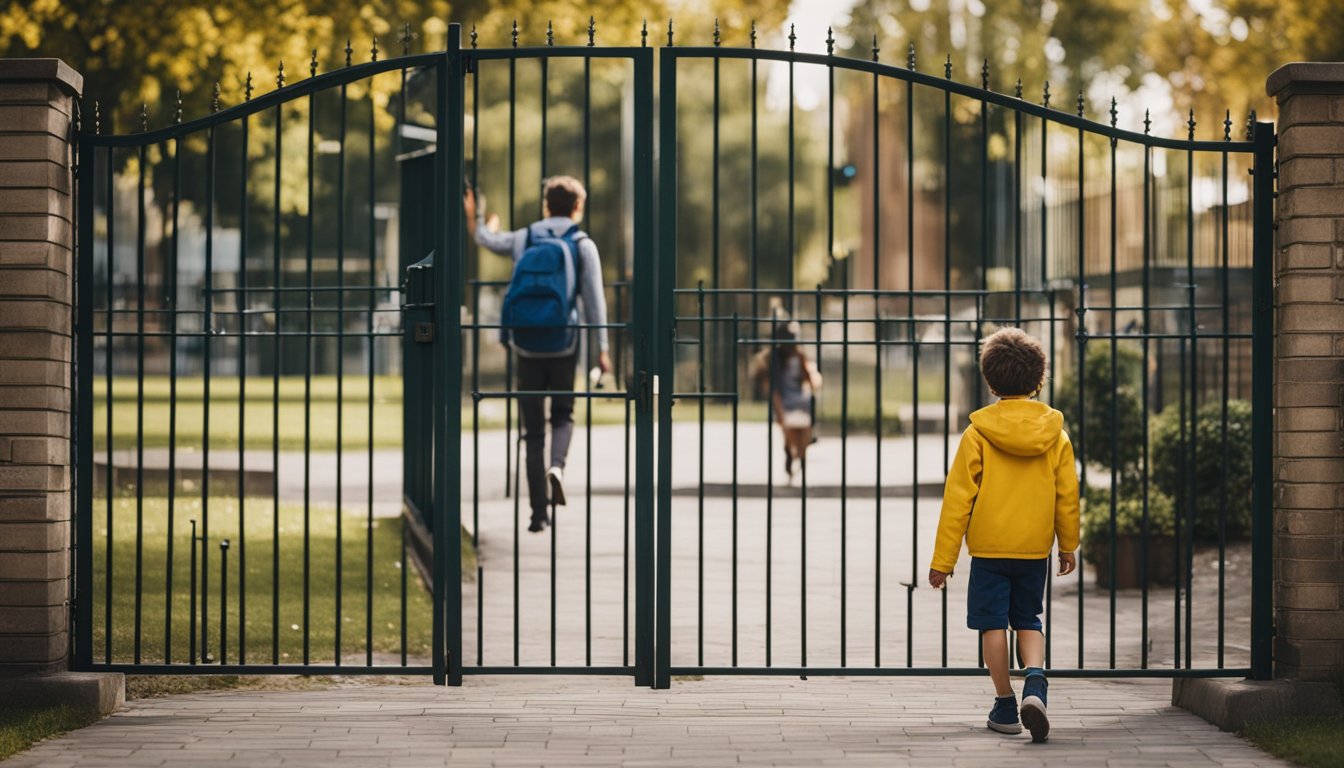Late updated: 29 Oct 2024 15:10
Written by:
Supporting Your Child's Transition To Secondary School: Essential Tips and Strategies
Starting secondary school is a milestone that marks a significant shift in a child’s educational journey. This transition comes with new challenges and opportunities, and as parents or carers, we play a pivotal role in smoothening this process. The best way to support your child during this period is by fostering open communication and encouraging independence, helping them meet new academic and social expectations with confidence.

As we guide our children through this transition, it's important to understand the emotions they might be experiencing. Feelings of excitement can be mixed with anxiety about making new friends and adapting to a different routine. By preparing them ahead of time through organisation and planning, we can help mitigate these concerns and transform apprehension into enthusiasm.
Building a strong partnership with the new school is essential. Sharing key information about our child's needs, including any special educational requirements, can make a world of difference. An understanding of how to navigate these changes together will support not just academic success, but also personal growth and resilience in our children.
Key Takeaways
- Open communication and support boost confidence.
- Prepare children to adapt to new routines and expectations.
- Collaborate with schools to address individual needs.
Preparing Your Child for the Transition
Ensuring a smooth transition from primary to secondary school involves understanding potential challenges and nurturing resilience. Engaging effectively with parents and carers plays a crucial role in this journey, supporting both the child’s mental and emotional wellbeing.
Understanding the Challenges of School Transition
Transitioning to secondary school is a significant milestone, often bringing mixed emotions. Children face various challenges, such as adapting to a new school environment, increased academic pressure, and establishing new peer relationships. Each child experiences this transition differently, influenced by their personality and previous experiences.
We must recognise that these challenges can impact a child's mental health. Anticipating emotional problems, such as anxiety or stress, can help us prepare suitable support structures. Encouraging open conversations about any fears or concerns is essential, allowing children to express themselves freely and seek reassurances. This proactive approach can ease their anxiety.
Fostering Resilience and Wellbeing
Building resilience in children is essential for their transition to secondary school. Resilience helps them cope with new academic and social challenges. Encouraging independence is a key strategy; allowing children to make decisions fosters a sense of control and confidence.
We should also focus on maintaining a balanced routine. Regular sleep, nutritious meals, and physical activity are vital for their overall wellbeing. Supporting children in developing time management skills can help them juggle new responsibilities effectively. Mindfulness activities like meditation can also boost their mental health by reducing stress and promoting relaxation. Resilience and wellbeing are intertwined—by fostering both, we provide a robust foundation for their secondary school journey.
Engaging with Parents and Carers
The involvement of parents and carers is integral to supporting a child’s transition. Establishing a partnership between school and home through regular communication can provide a reliable support network. Attending school meetings and participating in parent groups allows us to remain informed and involved in our child’s educational journey.
Additionally, sharing insights about our child's strengths and concerns with teachers can facilitate personalised support. Encouraging open dialogues within the family about changes and expectations can further ensure a supportive environment. By working together with schools, we help create a consistent and nurturing atmosphere that promotes our child’s adjustment and confidence during this significant adaptation period.
Supporting Academic Success and Personal Growth

As our children transition from primary to secondary school, they face academic pressures alongside emotional and social changes. Understanding and navigating these aspects is key to supporting their success and development.
Encouraging Academic Achievement
We can foster academic achievement by creating a structured learning environment at home. Consistent routines help children balance schoolwork with downtime. Discussing goal-setting encourages a proactive approach towards learning. When setting goals, it's crucial to make them specific, measurable, achievable, relevant, and time-bound (SMART).
Open communication with teachers allows us to stay informed about their progress. We should also encourage them to ask for help when needed, fostering resilience and self-advocacy. Highlighting the importance of time management and organisational skills can help students manage increased workloads effectively.
Navigating Social and Emotional Changes
During this transition, social dynamics and emotional well-being play a pivotal role. We must engage in regular conversations about their friendships and experiences at school, offering guidance on handling peer pressure. Encouraging participation in extra-curricular activities can help build confidence and interpersonal skills.
It's important that we recognise signs of stress or anxiety. Providing a supportive environment where they feel comfortable expressing their feelings is essential. Discussing coping strategies and maintaining a healthy balance between academics and leisure can promote their overall mental health and wellbeing. Involvement in diverse social groups can also be beneficial in strengthening their adaptability and resilience.
Frequently Asked Questions

Moving to secondary school is a significant transition that requires careful preparation. Our focus will guide parents in supporting their child's adjustments academically and socially, offering effective strategies and resources.
How can parents best support their child's adjustment to secondary school?
We can start by fostering open communication. Discuss any concerns your child might have and reassure them about new experiences. Encourage involvement in school activities, which can help build friendships and a sense of belonging in their new environment.
What strategies can help ease my child's transition from primary to secondary education?
Establishing a routine helps. Regular schedules for homework and extracurricular activities can set expectations early on. Visiting the school prior to the start of term can familiarise them with their new surroundings, reducing anxiety.
In what ways can I prepare my child for the academic and social changes encountered in secondary school?
We should focus on organisation skills. Help your child learn how to manage their time and responsibilities. Encourage them to develop strong study habits and seek help whenever necessary. Encourage social engagement through clubs or sports to ensure a balanced school life.
What are effective methods to address a child's struggles during the transition to secondary school?
If difficulties arise, we should communicate openly with our child to understand the root of the issue. Encourage them to seek peer support, and work together on resolving specific challenges, whether they are academic or social.
How should parents communicate with secondary school staff to facilitate their child's transition?
Regular check-ins with teachers can be beneficial. We should attend parent-teacher meetings and engage through emails or phone calls. Keeping informed about school policies and events helps us stay connected and proactive in our child’s school life.
What resources are available to assist children in their move to secondary school?
There are various resources, including books, support groups, and online forums where both parents and children can find community and advice. Schools often provide guides or counselling services specifically aimed at easing transitions.
